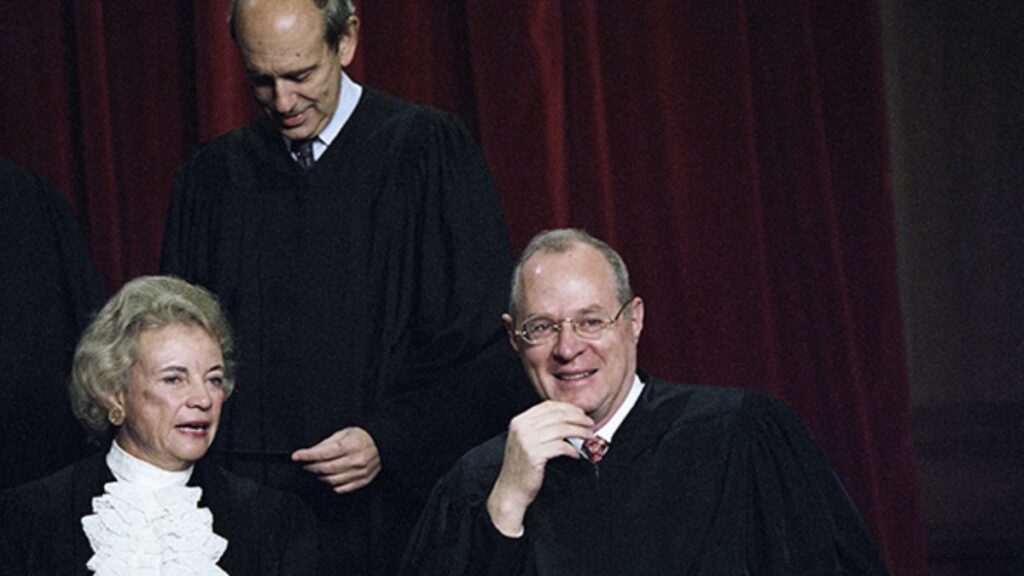Last updated on September 21st, 2021 at 01:24 pm
In Part One of this article, I outlined the likelihood that a majority of justices on the US Supreme Court are inclined to overturn Roe v Wade and Planned Parenthood v Casey that illegitimately declared a right to abortion in the United States Constitution. This precedence is being challenged by the state of Mississippi in Dobbs v Jackson Women’s Health Organization. The case is the most important and potentially consequential Supreme Court case in the past fifty years.
In Part Two today, I begin to make the case that two inter-related factors are all that stand in the way of reversing Roe and Casey – the legal doctrine of stare decisis, and politics. How much politics will influence legal principles will be the controlling factor as the process of considering this case, and the aftermath of a ruling will roil the country and impact the body politic like no other legal case in most people’s lifetime, very likely becoming a dominant subject of public discourse for much of 2022 and beyond.
One measure of the importance of a Supreme Court case is the number of amicus briefs filed in that case. According to a 2015 article in The National Law Journal, the most number of amicus briefs ever filed in a single case is 147, filed in the Obergefell v Hodges gay marriage case. That record is expected to be smashed in the Dobbs abortion case where over 80 briefs have already been filed in support of the state of Mississippi. Amicus briefs in defense of abortion providers, which will be voluminous, are not due until September 13th. By every indication, Dobbs will be the most watched case in modern US Supreme Court history.
Before getting into the politics, let’s briefly look at the doctrine of stare decisis. As a non-lawyer, I speak in layman’s terms. The doctrine stands for the proposition that citizens must be able to rely on US Supreme Court rulings as precedence in legal matters, and that such precedence should be respected and not easily disturbed. The doctrine is not found in the text of the Constitution itself, nor in America’s founding documents. Rather, it is a creation of the judiciary and is applied according to the dictates of the judiciary. Constitutional law professor Michael Stokes Paulsen calls stare decisis a “snare,” a doctrine that is “slippery, deceptive, and readily manipulated.” He notes that “the staunchest defenders of stare decisis today are liberal, activist judges, who invoke it selectively and perhaps a bit cynically, as a tool for entrenching liberal decisions that are not defensible under the Constitution. That is, they invoke stare decisis precisely to preserve such faithless departures from the text itself.”
You can be certain that the briefs filed next week by Jackson Women’s Health Organization and its allies will be heavy on the importance of stare decisis. It won’t be the first time that abortion advocates hang their hat on that doctrine.
In 1992 when the Planned Parenthood v Casey case was pending before the Supreme Court, many pro-life advocates were optimistic that the Court would overturn Roe. After all, then like now, there were six justices on the Court reliably thought to believe that Roe was wrongly decided. Four had been appointed to the Court by pro-life President Ronald Reagan (Rehnquist, Scalia, O’Connor and Kennedy). A George Bush appointee, Clarence Thomas, was thought to be pro-life, along with a John Kennedy appointee, Byron White. A second Bush appointee, David Souter, was thought to be a possible seventh vote to overturn Roe, though he was not counted upon.
So, what happened? Politics entered the fray. Three justices in particular were heavily lobbied by the establishment elite and the media to rule in favor of “women’s rights” and to demonstrate their independence from the Republican presidents who appointed them. If abortion was no longer a constitutional right, the left claimed that women would die. Three justices caved – O’Connor, Kennedy and Souter – and ruled for the abortion industry based on a twisted notion of stare decisis.
Could it happen again? You bet it could. Especially when you consider that the art of applying political pressure was in its infancy in 1992 when the Casey decision came down. Today, the ability of the left to put pressure on people including judges and politicians of both parties is extraordinary. And make no mistake about it, the pressure that will be applied by the left to Supreme Court justices hearing the Dobbs case will be beyond extreme – they will be subjected to the most intense pressure campaign in American history. No tool will be left in the toolbox of the left.
But it will not just be the political left that will engage as this case proceeds. The center-right coalition, especially including the pro-life community, will also rally to the public square. These contending forces, and the media that support them, will be engaged in white-hot commentary and advocacy
In Part Three tomorrow, I do some prognosticating to predict just how hot, intense and vicious the politics surrounding case will become, and offer a view of potential outcomes.
